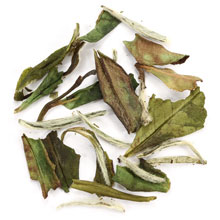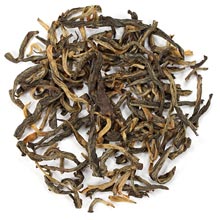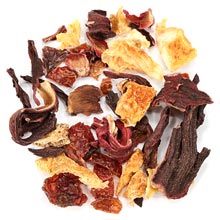The Basics of How To Cook with Tea
by Abby Morrison
October 19, 2022

Tea is a versatile ingredient, but with so many options, it can be a little overwhelming when you're first starting out. Have no fears. In this culinary crash course, we'll show you how to get started.
Flavor Basics
To begin, we'll examine some basic tea flavor profiles and how to pair them.
White
White teas tend to have delicate fruity and floral flavors. They're great for lighter recipes, including baked goods, whipped creams, fruit dishes, lighter broths, and iced treats. Be careful not to overwhelm them with stronger flavors like meats or spices.Green
Green teas often have grassy or vegetal flavors. They pair well with vegetable dishes, fish, soups, broths, and white meat, but can also have surprising effects when used to temper sweeter recipes.
Black
Black teas are known for strong, bold flavors and high astringency. They pair well with intense or heavy flavors like chocolates, meats, and marinades, but can also serve as a grounding contrast to sweeter flavors, similar to dark chocolate or coffee in ice cream or tiramisu.Oolong
Oolong teas have strong, earthy flavors and pair well with flavors like mushrooms, risottos, rice, and meats. They are less well suited to overly sweet recipes, but could pair well with intense, indulgent desserts or drinks.
Herbal
Herbal teas will vary wildly depending on the combination of fruits and herbs used to make them. This makes them a versatile option, with flavors ranging from tart and zesty to sweet and fruity, minty, spicy, and more. They bring a lot of flavors you might not find in other teas, so consider using them in desserts, mixed drinks, ice creams, soups, broths, marinades, and more.Specialty
Some teas are so unique, they're almost a category onto themselves. These teas are perfect when you're looking to add something very specific. A few we recommend are Lapsang Souchong (smoky), Matcha (grassy), and Chai (spiced).The Rule of Three
Now that you've got some ideas on which teas to use, let's cover how to use them properly.Since you don't want to lose the flavor of your tea amidst your other flavors, we typically recommend using your tea at at least three times its usual strength, which is accomplished not by steeping it for longer, which will burn the leaves, but by increasing the volume of tea used.
As an example, if your recipe calls for one cup of water and your tea says to steep one teaspoon of tea into every cup, just use three teaspoons (or one tablespoon) instead.
If you're using your tea as a dry ingredient, usually a tablespoon is a good place to start, though, whether you are using your tea in dry or liquid form, always feel free to modify the tea strength to your own personal taste.
Now, some basic techniques.
Tea as a Liquid
The easiest way to use tea as a liquid, of course, is to simply swap it out for water in any recipe you have.For things like steaming, syrups, broths, and marinades, you can also use tea as the starting base. If your recipe uses a liquid besides water, in some instances, you can simply mix the two liquids, such as juices, spritzers, or sodas.
For ingredients like milk or heavy cream, start by bringing your liquid up to just before boiling over medium heat. If it starts to steam or you see small bubbles, remove it from heat. Then add your tea and let it steep. Though its generally not great to squeeze your leaves, in this instance, it's okay. From there, you can either use the liquid hot or cold as your recipe requires.
Recipe examples: milkshakes, mocktails, marinades, iced cream, whipped cream, custard, syrups, broths
Tea as a Dry Ingredient
When using tea as a dry ingredient, you have a couple of options.In some cases, you can use the leaves whole, though typically you'll want to grind them first (we recommend our GritTEA Grinder for the job).
Whichever option you choose, be careful to remove any tea components that would not be pleasant for eating raw/whole before proceeding, for example, large spice pieces like cloves; floral petals and flower heads; or large pieces of dried fruit or peel. Be aware, of course, that this will make you lose some of the flavor you'd get from the steeped version of that tea.
Choose wisely!
On a similar note, some teas are better suited to this tactic than others. Black teas tend to grind easily into small, uniform pieces, whereas herbal or white teas can sometimes have pieces that are long, thin, and grassy, which can be hard to grind up or unpleasant to eat.
Once your tea is ready, simply add it at whichever stage is most appropriate to your recipe. For baking, this might mean adding it in with the other dry ingredients. For grilling or garnishing, waiting until later might be more appropriate. You can even infuse certain alcohols with tea by adding the dried leaves to the bottle. Just make sure it's done far enough in advance for the flavor to take!
Recipe examples: salad toppings, crusts for grilling or frying, pie crusts, cookies, cakes
We hope you've enjoyed this crash course on cooking with tea. Check out our https://www.teachef.com/ TeaChef website to find great new recipes to try, and if you create any of your own, be sure to post them there!
Happy cooking!